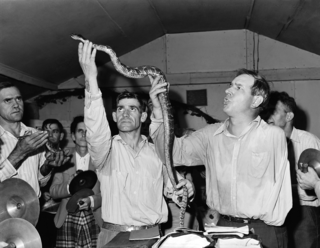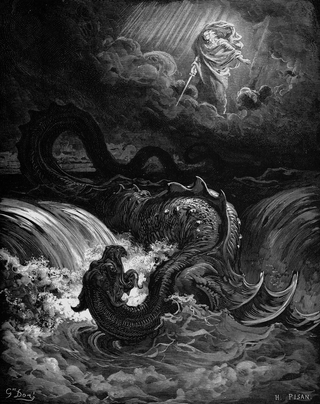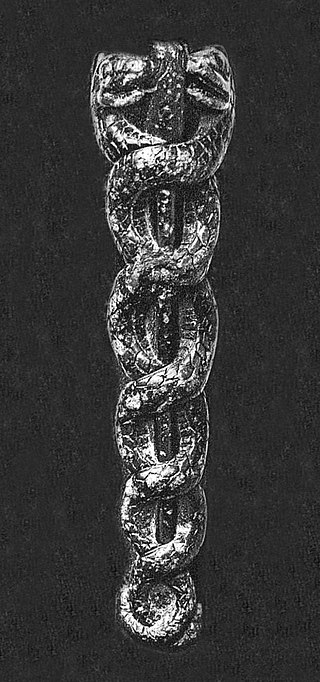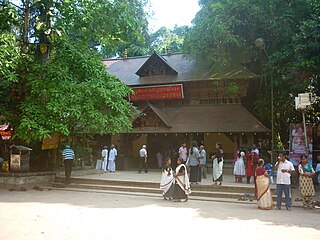External links
- The Worship of the Serpent (full text online)
- The Ophites, The Gnostics and Their Remains by Charles William King 1887
The Worship of the Serpent is an 1833 study, written by the clergyman John Bathurst Deane, of snake worship and specifically the snake mentioned in the Book of Genesis who convinced Eve to eat the fruit of the Tree of the Knowledge of Good and Evil, leading her to convince Adam to do the same.
Deane draws a number of conclusions and makes certain guesses regarding snake worship, not just confined to Europe, but indeed all over the world. Deane goes on in his title to list a number of associations to the serpent such as the dragon and the leviathan. So thorough (albeit outdated) is his research, that he has "traced THE WORSHIP OF THE SERPENT from Babylonia, east and west, through Persia, Hindûstan, China, Mexico, Britain, Scandinavia, Italy, Illyricum, Thrace, Greece, Asia Minor, and Phœnicia." (Ch VIII) [1]

Snakes are elongated, limbless, carnivorous reptiles of the suborder Serpentes. Like all other squamates, snakes are ectothermic, amniote vertebrates covered in overlapping scales. Many species of snakes have skulls with several more joints than their lizard ancestors, enabling them to swallow prey much larger than their heads. To accommodate their narrow bodies, snakes' paired organs appear one in front of the other instead of side by side, and most have only one functional lung. Some species retain a pelvic girdle with a pair of vestigial claws on either side of the cloaca. Lizards have independently evolved elongate bodies without limbs or with greatly reduced limbs at least twenty-five times via convergent evolution, leading to many lineages of legless lizards. These resemble snakes, but several common groups of legless lizards have eyelids and external ears, which snakes lack, although this rule is not universal.
The serpent, or snake, is one of the oldest and most widespread mythological symbols. The word is derived from Latin serpens, a crawling animal or snake. Snakes have been associated with some of the oldest rituals known to humankind and represent dual expression of good and evil.

In the biblical Books of Kings, the Nehushtan is the name given to the bronze image of a serpent on a pole. The image is described in the Book of Numbers, where Yahweh instructed Moses to erect it so that the Israelites who saw it would be cured and be protected from dying from the bites of the "fiery serpents", which Yahweh had sent to punish them for speaking against Him and Moses.

Apep, also spelled Apepi or Aapep or Apophis, was the ancient Egyptian deity who embodied darkness and disorder, and was thus the opponent of light and Ma'at (order/truth). He appears in art as a giant serpent. Apep was first mentioned in the Eighth Dynasty, and he was honored in the names of the Fourteenth Dynasty king 'Apepi and of the Greater Hyksos king Apophis.

Snake handling, also called serpent handling, is a religious rite observed in a small number of isolated churches, mostly in the United States, usually characterized as rural and part of the Holiness movement. The practice began in the early 20th century in Appalachia and plays only a small part in the church service. Participants are Holiness, or Pentecostals. The beliefs and practices of the movement have been documented in several films and have been the impetus for a number of state laws related to the handling of venomous animals.

Leviathan is a sea serpent noted in theology and mythology. It is referenced in several books of the Hebrew Bible, including Psalms, the Book of Job, the Book of Isaiah, the Book of Amos, and, according to some translations, in the Book of Jonah; it is also mentioned in the Book of Enoch. The Leviathan is often an embodiment of chaos and threatening to eat the damned after their life. In the end, it is annihilated. Christian theologians identified Leviathan with the demon of the deadly sin envy. According to Ophite diagrams, the Leviathan encapsulates the space of the material world.
The Ophites, also called Ophians, were a Christian Gnostic sect depicted by Hippolytus of Rome (170–235) in a lost work, the Syntagma ("arrangement").

The Ophite Diagrams are ritual and esoteric diagrams used by the Ophite sect of Gnosticism, who revered the serpent from the Garden of Eden as a symbol of wisdom, which the malevolent Demiurge tried to hide from Adam and Eve.

K’uk’ulkan, also spelled Kukulkan, is the serpent deity of Mayan mythology. It is closely related to the deity Qʼuqʼumatz of the Kʼicheʼ people and to Quetzalcoatl of Aztec mythology. Prominent temples to Kukulkan are found at archaeological sites in the Yucatán Peninsula, such as Chichen Itza, Uxmal and Mayapan.

Naga Panchami is a day of traditional worship of Nag or snakes observed by Hindus, Jains, and Buddhists throughout India, Nepal, and other countries where Hindu, Jain, and Buddhist adherents live. The worship is offered on the fifth day of bright half of lunar month of Shravana (July/August), according to the Hindu calendar. Some Indian states, such as Karnataka, Rajasthan and Gujarat, celebrate Naga Panchami on the dark half of the same month. As part of the festivities, a Naga or serpent deity made of silver, stone, wood, or a painting is given a reverential bath with milk and their blessings are sought for the welfare of the family. Live snakes, especially cobras, are also worshipped on this day, especially with offerings of milk and generally with the assistance of a snake charmer.

Snake worship is devotion to serpent deities. The tradition is present in several ancient cultures, particularly in religion and mythology, where snakes were seen as the holders of knowledge, strength, and renewal.
The Naassenes were a Christian Gnostic sect known only through the writings of Hippolytus of Rome.

Snakes are a common occurrence in myths for a multitude of cultures. The Hopi people of North America viewed snakes as symbols of healing, transformation, and fertility. In other cultures snakes symbolized the umbilical cord, joining all humans to Mother Earth. The Great Goddess often had snakes as her familiars—sometimes twining around her sacred staff, as in ancient Crete—and they were worshipped as guardians of her mysteries of birth and regeneration. Although not entirely a snake, the plumed serpent, Quetzalcoatl, in Mesoamerican culture, particularly Mayan and Aztec, held a multitude of roles as a deity. He was viewed as a twin entity which embodied that of god and man and equally man and serpent, yet was closely associated with fertility. In ancient Aztec mythology, Quetzalcoatl was the son of the fertility earth goddess, Cihuacoatl, and cloud serpent and hunting god, Maxicoat. His roles took the form of everything from bringer of morning winds and bright daylight for healthy crops, to a sea god capable of bringing on great floods. As shown in the images there are images of the sky serpent with its tail in its mouth, it is believed to be a reverence to the sun, for which Quetzalcoatl was also closely linked.

Glycon, also spelled Glykon, was an ancient snake god. He had a large and influential cult within the Roman Empire in the 2nd century, with contemporary satirist Lucian providing the primary literary reference to the deity. Lucian claimed Glycon was created in the mid-2nd century by the Greek prophet Alexander of Abonoteichos. Lucian was ill-disposed toward the cult, calling Alexander a false prophet and accusing the whole enterprise of being a hoax: Glycon himself was supposedly a hand puppet.

Nagaradhane is a form of serpent worship which, along with Bhuta Kola, is one of the unique traditions prevalent in coastal districts of Dakshina Kannada, Udupi and Kasaragod collectively known as Tulu Nadu, practiced by Tuluva community members. Cobras are not just seen as deities, but as an animal species which should be respected, appeased and protected for multiple social, religious and ecological reasons.

Mannarasala Sree Nagaraja Temple in Haripad is a very ancient and internationally known centre of pilgrimage for the devotees of serpent gods (Nagaraja). The famous Nagaraja temple "Mannarasala" in Haripad is nestled in a forest glade, like most snake temples. The Mannarasala Temple has over 100,000 images of snakes along the paths and among the trees, and is the largest such temple in Kerala, India. Couples seeking fertility come to worship here, and upon the birth of their child come to hold thanksgiving ceremonies here, often bringing new snake images as offerings. A special turmeric paste which is available at the temple is credited with curative powers.
Our Lady of Endor Coven, also known as Ophite Cultus Sathanas, was an American Satanic cult founded by Herbert Arthur Sloane in Cleveland, Ohio, with a claimed origin in 1948 though definitive documentation of the group does not appear until the 1960s. Heavily influenced by gnosticism, the group equated Sathanas with the Serpent in the Garden of Eden as revealer of true knowledge.
Serpent Men are a fictional race created by Robert E. Howard for his King Kull tales. They first appeared in "The Shadow Kingdom", published in Weird Tales in August 1929.
Serpents are referred to in both the Hebrew Bible and the New Testament. The symbol of a serpent or snake played important roles in the religious traditions and cultural life of ancient Greece, Egypt, Mesopotamia, and Canaan. The serpent was a symbol of evil power and chaos from the underworld as well as a symbol of fertility, life, healing, and rebirth.

The Double-headed serpent is an Aztec sculpture. It is a snake with two heads composed of mostly turquoise pieces applied to a wooden base. It came from Aztec Mexico and might have been worn or displayed in religious ceremonies. The mosaic is made of pieces of turquoise, spiny oyster shell and conch shell. The sculpture is at the British Museum.